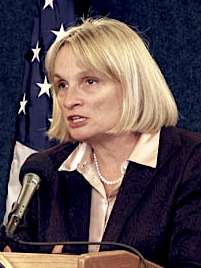United Nations High Commissioner for Refugees
The United Nations High Commissioner for Refugees (UNHCR) is a United Nations agency with the mandate to protect refugees, forcibly displaced communities and stateless people, and assist in their voluntary repatriation, local integration or resettlement to a third country. UNHCR‘s mandate does not apply to Palestinian refugees, who are assisted by UNRWA.
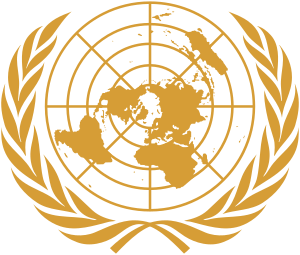 | |
 | |
| Abbreviation | UNHCR, HCR |
|---|---|
| Formation | 14 December 1950 |
| Type | United Nations Programme |
| Legal status | Nonprofit |
| Headquarters | Geneva, Switzerland |
Head | High Commissioner for Refugees Filippo Grandi |
Parent organization | United Nations General Assembly United Nations Economic and Social Council |
| Website | www.unhcr.org |
UNHCR was created in 1950, during the aftermaths of World War II. Its headquarters are in Geneva, Switzerland and it is a member of the United Nations Development Group.[1] The UNHCR has won two Nobel Peace Prizes, once in 1954 and again in 1981[2] and a Prince of Asturias Awards for International Cooperation in 1991.
History
Following the demise of the League of Nations and the formation of the United Nations the international community was acutely aware of the refugee crisis following the end of World War II. In 1947, the International Refugee Organization (IRO) was founded by the United Nations.[3] The IRO was the first international agency to deal comprehensively with all aspects of refugees' lives. Preceding this was the United Nations Relief and Rehabilitation Administration, which was established in 1944 to address the millions of people displaced across Europe as a result of World War II.[3]
In the late 1940s, the IRO fell out of favor, but the UN agreed that a body was required to oversee global refugee issues. Despite many heated debates in the General Assembly, the United Nations High Commissioner for Refugees was founded as a subsidiary organ of the General Assembly by Resolution 319 (IV) of the United Nations General Assembly of December 1949. However, the organization was only intended to operate for 3 years, from January 1951, due to the disagreement of many UN member states over the implications of a permanent body.[3]
UNHCR's mandate was originally set out in its statute, annexed to resolution 428 (V) of the United Nations General Assembly of 1950. This mandate has been subsequently broadened by numerous resolutions of the General Assembly and its Economic and Social Council (ECOSOC).[3] According to UNHCR,
[its] mandate is to provide, on a non-political and humanitarian basis, international protection to refugees and to seek permanent solutions for them.[3]
Soon after the signing of the 1951 Convention relating to the Status of Refugees, it became clear that refugees were not solely restricted to Europe. In 1956, UNHCR was involved in coordinating the response to the uprising in Hungary. Just a year later, UNHCR was tasked with dealing with Chinese refugees in Hong Kong, while also responding to Algerian refugees who had fled to Morocco and Tunisia in the wake of Algeria's war for independence. The responses marked the beginning of a wider, global mandate in refugee protection and humanitarian assistance.[3]
Decolonization in the 1960s triggered large refugee movements in Africa, creating a massive challenge that would transform UNHCR; unlike the refugee crises in Europe, there were no durable solutions in Africa, and many refugees who fled one country only found instability in their new country of refuge. By the end of the decade, two-thirds of UNHCR's budget was focused on operations in Africa and in just one decade, the organization's focus had shifted from an almost exclusive focus on Europe.[3]
In 1967, the Protocol Relating to the Status of Refugees was ratified to remove the geographical and temporal restrictions of UNHCR under the 1951 Convention relating to the Status of Refugees. As the Convention was confined to the refugee crisis in the aftermath of World War II in Europe, the Protocol was made to address the “new refugee situations that have arisen since the Convention was adopted and the refugees concerned that may therefore not fall within the scope of the Convention”.[4]
In the 1970s, UNHCR refugee operations continued to spread around the globe, with the mass exodus of East Pakistanis to India shortly before the birth of Bangladesh. Adding to the woes in Asia was the Vietnam war, with millions fleeing Laos, Cambodia, and Vietnam.[3]
The 1980s saw new challenges for UNHCR, with many member states unwilling to resettle refugees due to the sharp rise in refugee numbers over the 1970s. Often, these refugees were not fleeing wars between states, but inter-ethnic conflict in newly independent states. The targeting of civilians as military strategy added to the displacement in many nations, so even 'minor' conflicts could result in a large number of displaced persons. Whether in Asia, Central America or Africa, these conflicts, fueled by superpower rivalry and aggravated by socio-economic problems within the concerned countries, durable solutions continued to prove a massive challenge for the UNHCR. As a result, the UNHCR became more heavily involved with assistance programs within refugee camps, often located in hostile environments.[3]
The end of the Cold War marked continued inter-ethnic conflict and contributed heavily to refugee flight. In addition, humanitarian intervention by multinational forces became more frequent and the media began to play a big role, particularly in the lead up to the 1999 NATO mission in Yugoslavia, while by contrast, the 1994 Rwandan Genocide had little attention. The genocide in Rwanda caused a massive refugee crisis, again highlighting the difficulties for UNHCR to uphold its mandate, and the UNHCR continued to battle against restrictive refugee policies in so called 'rich' nations.[3]
Function
UNHCR was established on 14 December 1950[5] and succeeded the earlier United Nations Relief and Rehabilitation Administration. The agency is mandated to lead and co-ordinate international action to protect refugees (other than Palestinian refugees, who are assisted by UNWRA) and resolve refugee problems worldwide. Its primary purpose is to safeguard the rights and well-being of refugees. It strives to ensure that everyone can exercise the right to seek asylum and find safe refuge in another state, with the option to return home voluntarily, integrate locally or to resettle in a third country.
UNHCR's mandate has gradually been expanded to include protecting and providing humanitarian assistance to whom it describes as other persons "of concern," including internally displaced persons (IDPs) who would fit the legal definition of a refugee under the 1951 United Nations Convention Relating to the Status of Refugees and 1967 Protocol, the 1969 Organization for African Unity Convention, or some other treaty if they left their country, but who presently remain in their country of origin. UNHCR presently has major missions in Lebanon, South Sudan, Chad/Darfur, Democratic Republic of Congo, Iraq, Afghanistan as well as Kenya to assist and provide services to IDPs and refugees in camps and in urban settings.
UNHCR maintains a database of refugee information, ProGres, which was created during the Kosovo War in the 1990s. The database today contains data on over 11 million refugees, or about 11% of all displaced persons globally. The database contains biometric data, including fingerprints and iris scans and is used to determine aid distribution for recipients. The results of using biometric verification has been successful. When introduced in Kenyan refugee camps of Kakuma and Dadaab in the year 2013, the UN World Food Programme was able to eliminate $1.4m in waste and fraud.[6]
To achieve its mandate, the UNHCR engaged in activities both in the countries of interest and in countries with donors. For example, the UNHCR hosts expert roundtables to discuss issues of concern to the international refugee community.
Palestine refugee mandate
The United Nations Relief and Works Agency for Palestine Refugees in the Near East (UNRWA) has a wider definition of "refugee" than does UNHCR. UNRWA’s definition includes the patrilineal descendants of the original Palestinian refugees, but is limited to refugees resulting from the 1948 Arab-Israeli War. Refugees who meet the UNRWA definition are ineligible for assistance from UNHCR.
Public awareness & Future of Refugees

Several new programs have recently been introduced to support and to heighten awareness of the issues faced by refugees around the world. These two new programs are a product of the benchmarks set out by the United Nations Millennium Development Goals.
The UNHCR works in different regions of the world to raise awareness about the refugee crisis and the needs of these refugees.
Since 2009, the UNHCR acknowledged a large presence of migration and refugees in the Caribbean, where the refugee crisis remained largely unreported.[7] Many refugees who, instead of applying to the U.N., improperly search for asylum in the United States are unable to reach their destination and end up in the Caribbean.[8] However, migrant laws in most of these nations lacked any protections for asylum-seekers, even the ability to be recognized as a refugee or asylum seeker itself.[7] The UNHCR organized talks with these nations in Costa Rica in 2009,[8] in an effort to bring forward the lack of protections for refugees, who are often labeled as "illegal" [7] and prosecuted as unauthorized migrants. NOTE: A refugee-seeker applies through the U.N. for placement and an asylum-seeker applies within the Country in which asylum is sought. This is why some Countries label refugees as illegal when they did not apply through the U.N. for placement and entered the Country unlawfully.
In 2007, UNHCR offices in Canada launched an aggressive media campaign to shed light on the plight of refugees.[9] This campaign was meant to humanize the refugee crisis by showing refugees living in the midst of disturbing conditions. Using emotional appeals to raise public awareness, the campaign hoped to increase the interest of particularly "30 to 45-year-old professionals who are generally well educated, well read, but have not had direct experience or knowledge of refugee issues,”[9] according to fund-raising officer Jonathan Wade.
In Ireland, the UNHCR works to inform the public through different channels. The UNHCR in Ireland actively pursues media relations and "[they] supply the media with accurate and reliable information coupled with our unique insight based on our refugee protection mandate and role as one of the world’s leading humanitarian agencies".[10] It also engages its community by holding public events in aims of informing people of current refugee crises. One of these is the annual UNHCR/SARI Fair play Football Cup.[10]
The UNHCR was prominent in helping the Syrian refugees in Lebanon. When the Lebanese government was unable to withstand the influx of refugees, the UNHCR stepped in and eased the displacement for the refugees mainly by offering food and healthcare. They also helped register the refugees, so they would not be considered illegal in the eyes of the Lebanese government (Janmyr).
Artworks on refugee crisis & Artists as activists for refugees
Many contemporary artists had art workshops and art project and took many initiatives for refugees including artist Ai Weiwei and Anish Kapoor led London walk of compassion for refugees walking from the Royal Academy of Arts to the Orbit. Among art exhibitions and artworks on refugees, celebrity artist Ai Weiwei created an inflatable artwork is 230 feet long which he exhibited at Prague’s National Gallery and Sydney Biennale in 2018,The human rights activist has brought a 196-foot-long inflatable installation to Sydney’s Cockatoo Island as one of the cornerstones of the Biennale of Sydney exhibition. Ai states: ‘There’s no refugee crisis, only a human crisis… In dealing with refugees we’ve lost our very basic values. In this time of uncertainty, we need more tolerance, compassion and trust for each other, since we are all one, otherwise humanity will face an even bigger crisis.’ Danish artist OLAFUR ELIASSON’S GREEN LIGHT welcomes conversation about refugee crisis. In Paris walls along the Seine a photo exhibition along the banks included a 370-meter long panorama featuring portraits of refugees and photographs titled “Dreams of Humanity” taken by Syrian refugee children living in Iraq which was organized in collaboration with famous photojournalist Reza in partnership with UNHCR. Bangladeshi artist Firoz Mahmud has been conducting an art project on refugees, displaced people and minorities, titling 'Soaked Dream project' of dream and future desire of those deprived and underprivileged people which he exhibited at Bangkok Art Biennale curated by Apinan Poshyananda, Lahore Biennale, Dhaka Art Summit, MAXXI Rome, Office for Contemporary Art, Oslo and many cities in the world. The Harmony Art Collective had an exhibition of young refugees made murals together in Darling Quarter, Sydney.
Cooperation within the United Nations
As UNHCR is a programme governed by the UN General Assembly, and the UN Economic and Social Council, it cooperates with many other programs and agencies under the United Nations in order to effectively protect the rights of refugees.
On 19 September 2016, UN General Assembly hosted the UN Summit for Refugees and Migrants, a high-level summit to address large movements of refugees and migrants, with the aim of bringing countries together behind a more humane and coordinated approach.[11] Leaders of the UN High Commissioner for Human Rights, UN Entity for Gender Equality and the Empowerment of Women, UN Office on Drugs and Crime, and The World Bank were present. The summit addressed the root causes and drive for migration and the necessity of global cooperation. As a result of this summit, the United Nations unveiled a draft set of principles that urge the international community to build on the momentum set by the adoption of the New York Declaration for Refugees and Migrants (2016).[12][13] Specifically, the 20 draft principles focus on human rights; non-discrimination; rescue and assistance; access to justice; border governance; returns; violence; detention; family unity; child migrants; women migrants; right to health; adequate standard of living; decent work; right to education; right to information; monitoring and accountability; migrants’ human rights defenders; data; and international cooperation.[14]
On 28 September 2016, the UNHCR partnered with the UN Food and Agricultural Organization in Tehran for the Solutions Strategy for Afghan Refugees. FAO highlighted the contributions to be made by FAO towards SSAR objectives on livelihood related activities including livestock and fishery initiatives as well as nutritional projects in Iranian schools.
FAO and UNHCR are committed to increasing refugees’ access to livelihood opportunities and reducing dependency on humanitarian aid. Of late, a joint livelihood strategy for South Sudan was launched looking to address this issue with a clearly defined action plan. The strategy targets both refugees (70 percent) and local communities (30 percent) in refugee-hosting areas across the country.[15]
Awards
Since 1954, the UNHCR Nansen Refugee Award has been annually awarded to a person or an organization in recognition of outstanding service to the cause of refugees, displaced or stateless people.
The UNHCR itself was awarded the Nobel Peace Prize in 1954 and 1981. The UNHCR was awarded the Indira Gandhi Prize in 2015.
In 1991 was awarded with the prestigious Prince of Asturias Award for International Cooperation.[16]

 A helicopter arrives at a refugee facility in Macedonia with an underslung load of Aid
A helicopter arrives at a refugee facility in Macedonia with an underslung load of Aid- Trucks loaded with supplies drive across the border from Turkey into Iraq to take part in Operation Provide Comfort, a multinational effort to aid Kurdish refugees
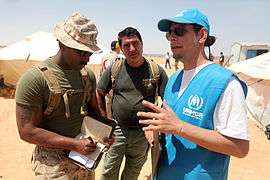 An UNHCR-officer talks with a Marine during Exercise Eager Lion 12
An UNHCR-officer talks with a Marine during Exercise Eager Lion 12 Workers from the UNHCR, and CARE International gather bundles of shelters and mosquito nets in Kenya
Workers from the UNHCR, and CARE International gather bundles of shelters and mosquito nets in Kenya- Heavily fortified UNHCR offices in Somaliland
 A UNHCR refugee camp at Baharka - Iraq
A UNHCR refugee camp at Baharka - Iraq.jpg) UNHCR Camp, Kurdistan (North-Iraq) June 2014
UNHCR Camp, Kurdistan (North-Iraq) June 2014.jpg)
.jpg) Inside the refugee camps of northern Iraq
Inside the refugee camps of northern Iraq
Persons of concern to UNHCR
The UNHCR's Mid-Year Trends report of June 2015 (based on information for mid-2015 or latest available information up to that date) reported an "unprecedented" 57,959,702 individuals falling under its mandate (for reference, on January the 1st, 2007, 21,018,589 people - or less than half of the number in 2015 - fell under the mandate of the UNHCR). The sharp increase was mainly attributed to the Syrian Civil War, "with the outbreak of armed crises or the deterioration of ongoing ones in countries like Afghanistan, Burundi, Democratic Republic of the Congo, Mali, Somalia, South Sudan and the Ukraine contributing to prevailing trends."[17]
Persons of concern include refugees and asylum-seekers, people in refugee-like conditions, internally-displaced people (IDPs), stateless persons and "others of concern to the UNHCR".

Sorted by the UNHCR bureau in which refuge or asylum is sought, the number for June 2015 included:
- 16,796,426 in the Middle East and North Africa, of which
- 2,941,121 are refugees
- 64,166 are in refugee-like situations
- 109,847 have pending asylum cases
- 374,309 are stateless ("persons not considered as nationals by any State")
- 13,297,101 are IDPs or people in IDP-like situations assisted by the UNHCR
- 9,694,535 in the Asia and Pacific bureau, of which
- 3,506,644 are refugees
- 278,350 are in refugee-like situations
- 133,894 have pending asylum cases
- 1,801,802 are stateless ("persons not considered as nationals by any State")
- 2,965,211 are IDPs or people in IDP-like situations assisted by the UNHCR
- 8,451,275 in East and Horn of Africa, of which
- 2,713,748 are refugees
- 33,553 are in refugee-like situations
- 108,016 have pending asylum cases
- 233,726 are stateless ("persons not considered as nationals by any State"
- 5,119,463 are IDPs or people in IDP-like situations assisted by the UNHCR
- 7,726,594 in the Americas, of which
- 501,049 are refugees
- 251,888 are in refugee-like situations
- 276,394 have pending asylum cases
- 136,413 are stateless ("persons not considered as nationals by any State")
- 6,520,270 are IDPs or people in IDP-like situations assisted by the UNHCR
- 7,585,581 in Europe, of which
- 3,506,644 are refugees
- 14,261 are in refugee-like situations
- 827,374 are asylum-seekers
- 610,532 are stateless ("persons not considered as nationals by any State"
- 2,574,886 are IDPs or people in IDP-like situations assisted by the UNHCR
- 3,580,181 in Central Africa-Great Lakes, of which
- 865,112 are refugees
- 13,741 are in refugee-like situations
- 18,623 have pending asylum cases
- 1,302 are stateless ("persons not considered as nationals by any State"
- 2,021,269 are IDPs or people in IDP-like situations assisted by the UNHCR
- 2,754,893 in Western Africa of which
- 258,893 are refugees
- (Information not applicable/unavailable) on number in refugee-like situations
- 9,298 have pending asylum cases
- 700,116 are stateless ("persons not considered as nationals by any State")
- 1,549,516 are IDPs or people in IDP-like situations assisted by the UNHCR
- 1,370,217 in Southern Africa, of which
- 179,837 are refugees
- (Information not applicable/unavailable) on number in refugee-like situations
- 860,500 have pending asylum cases
- 300,000 are stateless ("persons not considered as nationals by any State")
- (Information not applicable/unavailable) on number of IDPs or people in IDP-like situations assisted by the UNHCR
2019
|
Refugees (incl. refugee-like situations)
Asylum-seekers (pending cases)
Returned refugees
Internally displaced persons (IDPs)
|
Returned IDPs
Stateless persons
Others of concern
|
Staffing
As of November 2018, the UNHCR employed a staff of 16,765 people in 138 countries.[18]
High Commissioners
| High Commissioner of the UNHCR | |
|---|---|
 | |
| High Commissioner for Refugees | |
| Reports to | UN General Assembly |
| Appointer | UN General Assembly |
| Term length | 5 years |
| Formation | 1 January 1951 |
| First holder | Gerrit Jan van Heuven Goedhart |
| Website | Official website |
The UN General Assembly elects High Commissioners every five years. High Commissioners are supported by the 'Executive Committee to the High Commissioner's Programme' and he or she has to make annual reports to the UN General Assembly and needs to follow their directives.[19] The current High Commissioner is Filippo Grandi, who has held the post since 1 January 2016.[20] Prior to the establishment of the UNHCR, Fridtjof Nansen was the League's High Commissioner for Refugees. The post of High Commissioner has been held by:[21]
| No. | High Commissioner | Took office | Left office | Time in office | Nationality | |
|---|---|---|---|---|---|---|
| 0 | Fridtjof Nansen (1861–1930) League of Nations High Commissioner | 1 September 1921 | 1927 | 4–5 years | ||
| 1 | Gerrit Jan van Heuven Goedhart (1901–1956) | 1 January 1951 | 8 July 1956 | 5 years, 189 days | ||
| 2 | August R. Lindt (1905–2000) | 8 July 1956 | 3 November 1960 | 4 years, 118 days | ||
| 3 | Félix Schnyder (1910–1992) | 3 November 1960 | 31 December 1965 | 5 years, 58 days | ||
| 4 | Sadruddin Aga Khan (1933–2003) | 1 January 1966 | 31 December 1977 | 11 years, 364 days | ||
| 5 | Poul Hartling (1914–2000) | 1 January 1978 | 31 December 1985 | 7 years, 364 days | ||
| 6 | Jean-Pierre Hocké (born 1938) | 1 January 1986 | 31 December 1989 | 3 years, 364 days | ||
| 7 | Thorvald Stoltenberg (1931–2018) | 1 January 1990 | 3 November 1990 | 306 days | ||
| 8 | Sadako Ogata (1927–2019) | 3 November 1990 | 31 December 2000 | 10 years, 59 days | ||
| 9 | Ruud Lubbers (1939–2018) (Resigned due to internal investigation) | 1 January 2001 | 20 February 2005 | 4 years, 50 days | ||
| – | Wendy Chamberlin (born 1948) Acting | 24 February 2005 | 2 June 2005 | 98 days | ||
| 10 | António Guterres (born 1949) | 2 June 2005 | 31 December 2015 | 10 years, 212 days | ||
| 11 | Filippo Grandi (born 1957) | 1 January 2016 | Incumbent | 4 years, 228 days |
Special Envoy of High Commissioner Filippo Grandi
After 10 years serving as a Goodwill Ambassador, Angelina Jolie was promoted in 2012 to Special Envoy to the High Commissioner. In this role she represents the UNHCR and High Commissioner Filipo Grandi at the diplomatic level and works to facilitate long-term solutions for people displaced by large-scale crises, such as Afghanistan and Somalia. "This is an exceptional position reflecting an exceptional role she has played for us," said a UNHCR spokesman.
Goodwill ambassadors
UNHCR is also represented by a number of UNHCR Goodwill Ambassadors, who at present are:


.svg.png)

























Previous ambassadors include:
Controversies
The 1994-95 repatriation of Rohingyans
According to some scholars, with time UNHCR left an initial preference for asylum and resettlement policies, tending to prefer repatriation measures of refugees instead. Sometimes, this might have led the agency's bureaucratic apparatus to adopt pathological behaviours.[22]
An example of the latter might be considered the handling of the 1995 Rohingyan crisis. At the time, thousands of Rohingyans were fleeing Burma (or Myanmar), seeking shelter in UNHCR camps in Bangladesh. According to some, UNHCR has been decisive in promoting the repatriation of refugees, although NGOs on the field and the UN were skeptical about better political and security conditions in Burma.[23]
Also, controversies arose on the methods with which the UNHCR staff was conducting surveys in the camps to establish if refugees were willing to move back to Burma or not.[23]
See also
- Against All Odds (video game)
- Albert Einstein German Academic Refugee Initiative Fund, a scholarship program for refugees administered by UNHCR
- Dadaab
- Nansen International Office for Refugees
- UNHCR Representation in India
- United Nations High Commissioner for Refugees Representation in Cyprus
- United Nations Relief and Works Agency for Palestine Refugees in the Near East
References
Citations
- UNDG Members Archived 11 May 2011 at the Wayback Machine. Undg.org. Retrieved on 2013-07-12.
- "Nobel Laureates Facts – Organizations". Nobel Foundation. Retrieved 13 October 2009.
- Refworld | Self-Study Module 1: An Introduction to International Protection. Protecting Persons of Concern to UNHCR. Unhcr.org (1 August 2005). Retrieved on 2013-07-12.
- "Convention relating to the Status of Refugees". www.ohchr.org. Retrieved 29 September 2016.
- "History of UNHCR: A global humanitarian organization of humble origins". UNHCR. Retrieved 1 November 2009.
- "Phones are now indispensable for refugees". The Economist. Retrieved 20 February 2017.
- Refugees, United Nations High Commissioner for. "UNHCR and Caribbean partners work to raise awareness of "invisible" refugees". UNHCR. Retrieved 16 November 2016.
- "UNHCR discuss plight of refugees in Caribbean". ftp.jamaicagleaner.com. Retrieved 16 November 2016.
- Refugees, United Nations High Commissioner for. "Canadian-made refugee awareness campaign aims to shock". UNHCR. Retrieved 16 November 2016.
- Refugees, United Nations High Commissioner for. "Building Awareness". www.unhcr.ie. Retrieved 16 November 2016.
- "Summit for Refugees and Migrants - 19 September 2016". 12 December 2014. Retrieved 29 September 2016.
- "New York Declaration for Refugees and Migrants". un.org. UN. Retrieved 8 November 2018.
- "New York Declaration". un.org. UN. Retrieved 8 November 2018.
- Section, United Nations News Service (20 September 2016). "UN News - UN official unveils draft principles on protecting human rights of refugees and migrants". UN News Service Section. Retrieved 29 September 2016.
- "UNHCR and FAO help vulnerable refugees and South Sudanese families strengthen their food security". www.fao.org. Retrieved 29 September 2016.
- Tecnologías, Developed with webControl CMS by Intermark. "UNHCR (United Nations High Comissioner for Refugees) - Laureates - Princess of Asturias Awards - The Princess of Asturias Foundation". The Princess of Asturias Foundation. Retrieved 21 October 2018.
- Refugees, United Nations High Commissioner for. "Mid-Year Trends, June 2015". UNHCR. Retrieved 27 February 2016.
- "Figures at a Glance". UNHCR. Retrieved 26 March 2019.
- http://www.unhcr.org/46f7c0ee2.pdf |page12
- "UN appoints Filippo Grandi as next high commissioner for refugees". The Guardian. London. 12 November 2015. Retrieved 27 November 2015.
- "UNHCR Ehemalige FlüchtlingshochkommissarInnen" Archived 29 May 2015 at the Wayback Machine. Retrieved 15 May 2015.
- Barnett, Michael; Finnemore, Martha (2004). Rules for the world. Cornell University Press. pp. 73-104.
- Barnett, Michael; Finnemore, Martha (2004). Rules for the world. Cornell University Press. pp. 105-120.
Sources
Janmyr, Maja. 2016. “Precarity in Exile: The Legal Status of Syrian Refugees in Lebanon”. Refugee Survey Quarterly, no. 35 (November): 58-78.
- Gil Loescher, Alexander Betts and James Milner. UNHCR: The Politics and Practice of Refugee Protection into the Twenty-First Century, Routledge. 2008.
- Alexander Betts. Protection by Persuasion: International Cooperation in the Refugee Regime, Cornell University Press. 2009.
- Gil Loescher. The UNHCR and World Politics: A Perilous Path. Oxford University Press. 2002
- Fiona Terry. Condemned to Repeat? The Paradox of Humanitarian Action. Cornell University Press. 2002.
- Nicholas Steiner. Problems of Protection. Routledge. 2003.
External links
| Wikimedia Commons has media related to United Nations High Commissioner for Refugees. |
- Official website
- UNHCR's "Refworld" refugee document and news web site: from UNHCR's Status Determination and Protection Information Section (SDPIS) in the Division of International Protection Services (DIPS).
- Bottled Water Program in Support of the UNHCR
- News from UNHCR official website
- "Basic facts" from official website
- Measuring Protection by Numbers, Report from official website
- United Nations Rule of Law: The United Nations High Commissioner for Refugees, on the rule of law work conducted by the High Commissioner for Refugees.
- History of the United Nations – UK Government site
- "Who is a Refugee and who is not – the Crisis of Identity as a Challenge to Protection" Online video of an address by Ms. Erika Feller, director, Department of International Protection, UNHCR, in 2005
- USCRI's Campaign to End Refugee Warehousing
- USCRI's joint Statement Calling for Solutions to End the Warehousing of Refugees
- "Prisons of the Stateless: The Derelictions of UNHCR" by Jacob Stevens
- Nine Million
- EarthWater
_(cropped).jpg)


.jpg)

_by_Erling_Mandelmann.jpg)
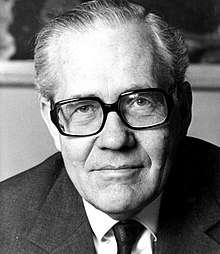

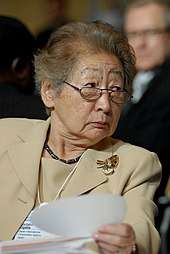
.jpg)
